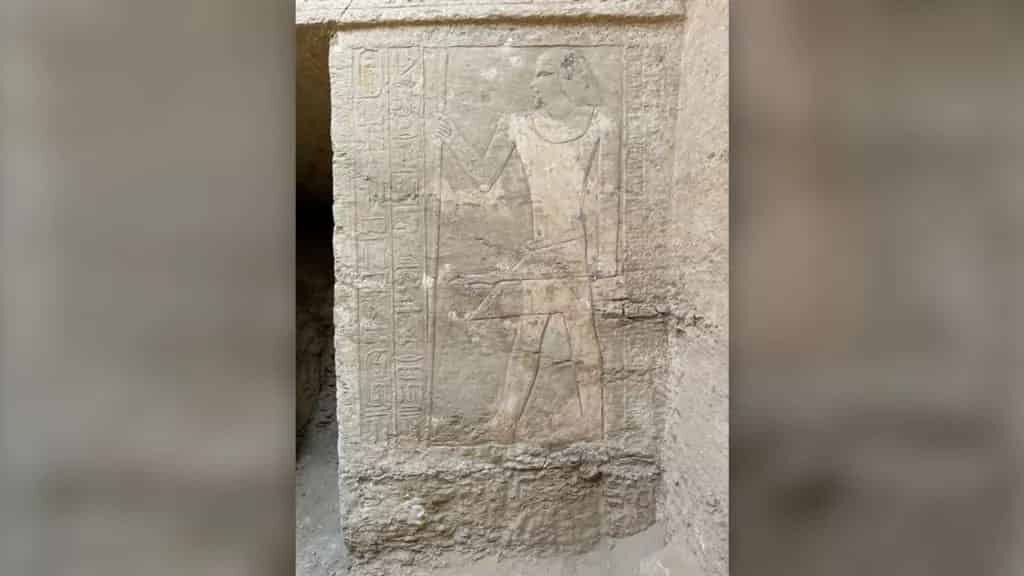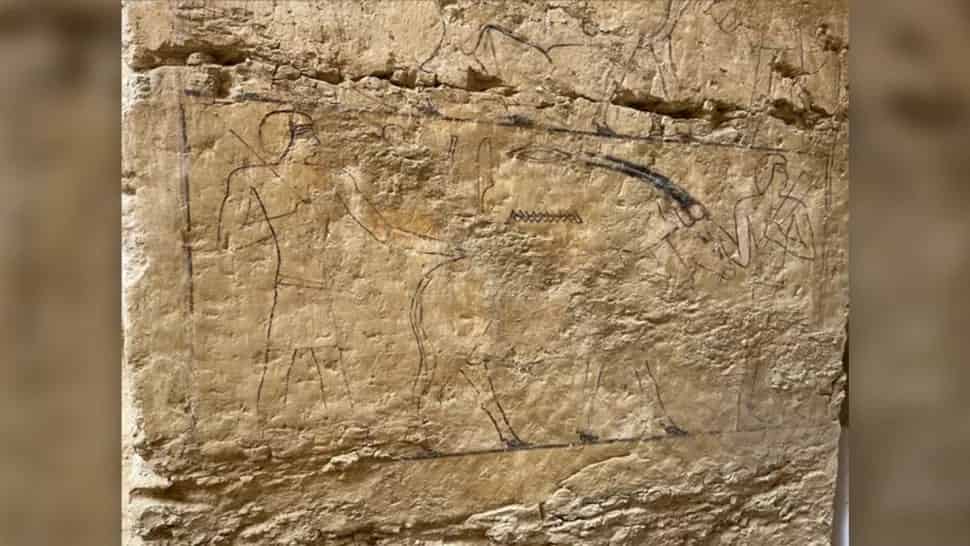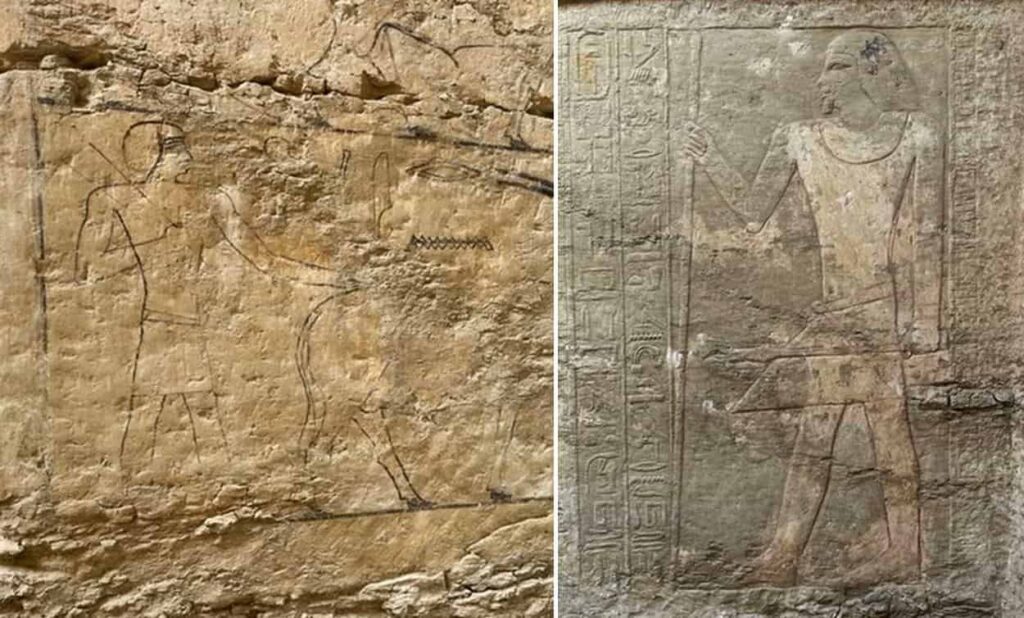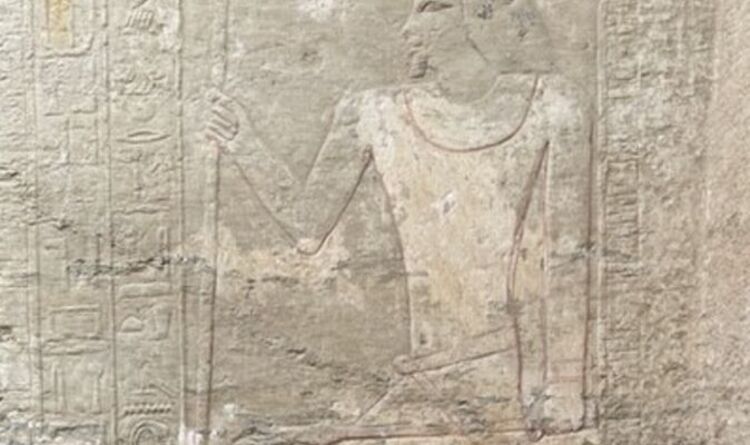The tomb of a man named Mehtjetju, who was responsible for the secret documents of the royal chancery during the reign of Userkare, the second pharaoh of the 6th dynasty, was discovered by Polish archaeologists in Saqqara, near the oldest pyramid in the world, dating back to 4,300 years ago.
After reading the hieroglyphics inscribed on its facade, Egyptologists have determined that the tomb belongs to Mehtjetju.
In an interview, Professor Kamil O. Kuraszkiewicz, head of research at the Polish-Egyptian archaeological mission in Saqqara and a faculty member at the University of Warsaw’s Faculty of Oriental Studies, emphasized that Mehtjetju’s high position likely allowed him to hire a team of skilled craftsmen, as his chapel is decorated with beautifully crafted reliefs. The excavation was carried out within the framework of the University of Warsaw’s Center for Mediterranean Archeology mission.
The tomb is located on the eastern shore of the Dry Moat, a large rectangular ditch measuring roughly 750 by 600 meters, which once surrounded the Step Pyramid, the oldest pyramid complex in Egypt.
The Dry Moat, which was built around 4,700 years ago by Djoser and includes a great wall and adjoining chapels, is now almost completely covered by debris and sand carried by the desert and is not visible from the ground. However, its outline can be seen in some aerial and satellite photographs.
Through successive seasons of excavation, researchers have obtained a steady stream of new information about the site. It has been discovered that the Dry Moat was used for several hundred years after Djoser’s reign, as evidenced by the recent discovery of an entrance to Mehtjetju’s tomb.
The inscription on the facade of the newly discovered chapel reveals that Mehtjetju was given access to view the secrets of the pharaoh’s archive.
However, it is possible that what is important here is not necessarily the classification of these top-secret documents, but rather Mehtjetju’s access to the place where they were created.
It is possible that he had the right to see documents submitted to the royal chancery before they were made public, although Professor Kuraszkiewicz notes that this is merely a guess as there is little information available about this time period.
In addition to his responsibilities with the royal chancery, Mehtjetju was also an inspector of the royal treasury and a priest of the tomb cult of King Teti.
While the interior of the chapel and the tomb beneath it (presumed to have been excavated) have yet to be examined, archaeologists have been able to gather a significant amount of information just from reading the foundation facade of the tomb.
The inscription and reliefs on the facade depict its owner, although the colors have not been preserved. Despite this, the relief itself shows the exceptional skill of the artist, with graceful lines and subtle modeling on par with the best relief makers of the Merefnebef tomb.









